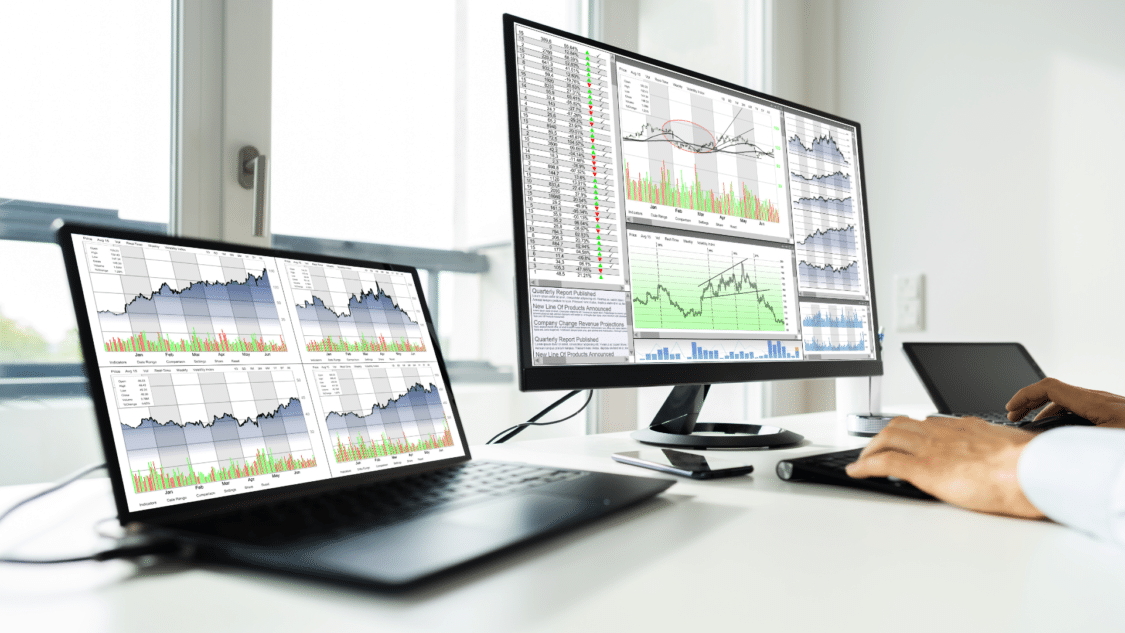Leverage trading in crypto refers to using borrowed funds to make trades. This type of trading can increase your buying or selling power and allow you to trade more significant quantities. While this trading method may increase your chances of profit, it also comes with risks. As the market is volatile leveraged trading can also lead to losses if the market shifts in the opposite direction.

Leverage Trading – How does it pertain to crypto trading?
As we explained above, this form of trading refers to using borrowed funds and, in that way, making trades. Leverage has various crypto derivatives. Margin trading, leveraged tokens, and futures contracts are examples of leveraged trade.
Before borrowing funds, you need to have funds in your trading account. The initial amount the trader provides is known as the collateral. The required collateral depends on the leverage you plan to use. It also depends on the margin, the term used for the total value.

In addition to the initial margin deposit, you must maintain a margin threshold for your trades. When the market moves against your position, and the margin falls below the maintenance limit, you must deposit additional money into your account to prevent liquidation. The maintenance margin is another name for the threshold.
Trading with leverage opens more doors for traders. It allows you to purchase or sell assets based only on your collateral rather than your holdings. So, even if you don’t own an asset, you may borrow one and sell it if you believe the market will fall.
What is 20X Leverage?
20x leverage refers to the notion that a trader can open a position 20 times larger than the amount of capital they are prepared to put in. In simpler terms, if a trader has $1,000 of capital and uses 20x leverage, they can open a position that is essentially worth $20,000. With 20x leverage, the trader only needs to put up a small fraction of the total trade value as collateral. The amount left is borrowed from the broker or exchange.
While leverage can increase profits, it also increases the chance for losses. This means traders using 20x leverage should be prepared to manage their risk carefully. They must have a solid understanding of the market and have their trading strategy ready to be implemented. It’s also important to note that different platforms may offer different levels of leverage, and traders should consider the risks and benefits of each level before choosing a platform to trade on.
What are the benefits of Leverage Trading, and why would investors use this strategy?
Leverage trading offers several potential benefits for cryptocurrency investors. Firstly, it allows traders to increase their exposure to the market without giving up the complete value of their trade. Also, leverage trading is the ability to perform trades quickly and take advantage of short-term market fluctuations. Traders can use leverage to open and close positions quickly, generating profits in no time. This can be useful in the crypto market, where prices fluctuate constantly.
Leverage trading can also provide traders with more flexibility in their investment strategies. Giving access to larger positions, traders can take advantage of more trading techniques, like hedging or arbitrage.
Finally, leverage trading can be a valuable means of managing risk. Traders can use leverage to help limit their exposure to market fluctuations by opening smaller positions. This can help lower losses and protect against volatility in the market.
What risks are associated with leverage trading, and how can traders avoid them?
Leverage trading can be a useful tool to maximize profit. However, just like with any tool, it carries significant risks that traders should be informed of. Below we will discuss some of the risks associated with leverage trading and some strategies to avoid those risks best:
One of the main risks when it comes to leverage trading is losses. Traders should see it as essential to set up a stop loss order to limit losses on trades. If the value of a trader’s position drops below a certain level, they can receive a margin call from their broker or exchange. A margin call requires them to add more funds to their account to cover the shortfall. Traders should pay attention and monitor their various positions to avoid margin calls.
Some markets don’t have enough liquidity to support large leverage trades. Low liquidity can result in slippage or difficulty closing positions. Traders can avoid this risk by sticking to the more liquid markets and monitoring their positions closely to ensure they can exit if need be. Leverage trading can be especially risky in volatile markets, as sudden price swings can cause losses to escalate quickly. Traders can manage this risk by using stop-loss orders to limit potential losses and being mindful of the risks of trading in volatile markets.
What are some common Leverage Trading strategies?
Some of the more well-known leverage trading strategies include the following:
- Directional Trading: A trader takes a position based on where he thinks the market is headed. Depending on whether they anticipate a price increase or decrease, traders can use leverage to improve their exposure to a particular cryptocurrency by going long (buying) or short (selling)
- Arbitrage Trading: This trading strategy takes advantage of price differences between different crypto exchanges. Traders can use leverage to quickly buy and sell cryptocurrencies across multiple exchanges, resulting in profits from slight price differences.
- Spread Trading: Using this method, you will simultaneously buy and sell two separate cryptocurrencies with a strong correlation. Using leverage, traders can expand their position size and possibly profit from minor price shifts between the two cryptocurrencies.
- Scalping: Scalping is the practice of making numerous trades quickly to profit from small movements in price. Leverage allows traders to open quickly and close positions, possibly making money from any slight shift in the market.
- Hedging: In this approach, the risk of one position can be offset by holding a position in another asset. Using leverage, traders can open a position that will serve as insurance against future losses in another position, potentially lowering portfolio risk overall.
Do Leverage Trading and Margin Trading have a connection?
Margin trading and leverage trading are closely related topics. They both involve borrowing funds from a broker or exchange to increase the size of a trade. In margin trading, the trader puts up a specific amount of capital to open a position, and the broker or exchange provides the rest of the funds needed. The margin acts as collateral for the borrowed funds, and the trader must maintain a minimum margin level to keep the position open.
On the other hand, leverage trading is when a trader uses borrowed funds to increase the size of a trade past what the trader could afford with their capital alone. The trader puts up a smaller amount of capital as collateral while the remaining funds are borrowed from the broker or exchange. In both cases, the funds borrowed come with interest or fees that the trader is responsible for paying back to the broker or exchange. Additionally, they both risk increasing losses and gains since the trader is taking on more vulnerability to the market than they could manage on their own.
While there are some differences in how they both work, they are similar in that they are both forms of trading that involve borrowing funds to increase position size. Traders using leverage should also know their trades’ margin requirements and interest rates.
Conclusion:

This trading method allows traders to start to slow with a lower initial investment, with the potential for significant gains. Leverage and volatility combined can cause liquidation. Therefore, you must be cautious, consider things, and evaluate the risks of leveraged trading.
For more news updates, visit our homepage now and see our latest news article. Want to learn more about trading? Visit our education page now and learn for FREE!

